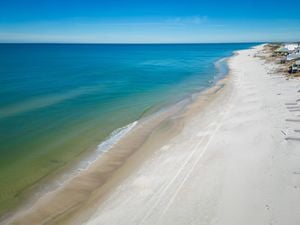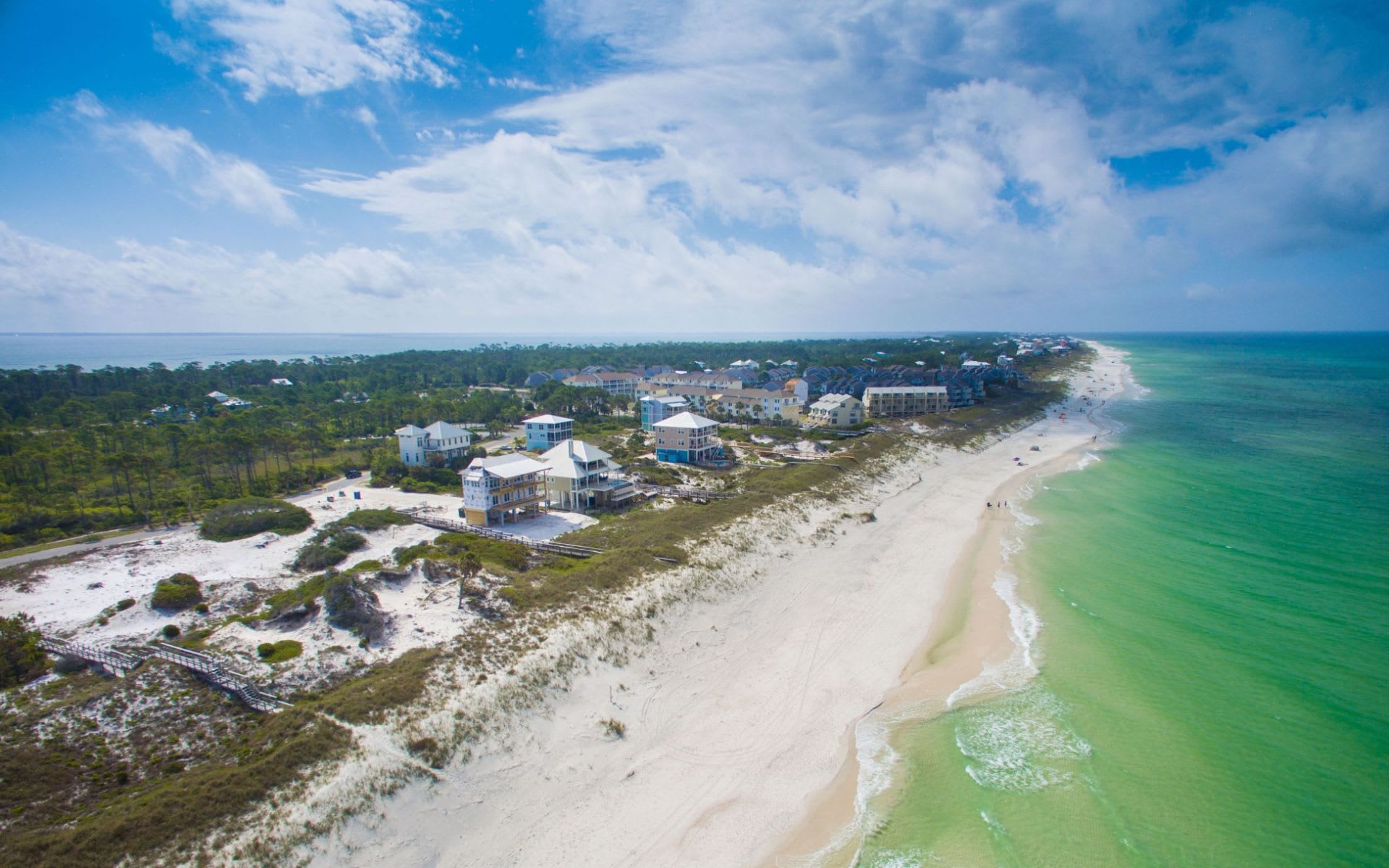Cape San Blas, Florida, is a paradise for anyone dreaming of owning a beach home. With its sugary white sands, breathtaking sunsets right over the water, and tranquil old Florida style of atmosphere, it’s no wonder this area has become a hotspot for homebuyers and investors seeking beach property. However, purchasing a beach home here involves considerations unique to coastal properties. Did you know the limit for construction height is 50′ (as of the date in writing this)? Whether you’re planning to live in your home, use it as a vacation rental, or both, here are the top 5 things, plus a Bonus fun fact, you should know before making your purchase!
1. Understanding the CBRA Zone (Coastal Barrier Resources Act)
A significant portion of Cape San Blas is located within a Coastal Barrier Resources Act (CBRA) zone. As a matter of fact, the majority of it is within this zone. Properties in this zone are ineligible for federally backed flood insurance or other federal funding that other parts of the coastline are used to acquiring. This means you’ll need to secure private flood insurance, which can sometimes be more expensive than government backed policies like FEMA.
While this might seem like a drawback, the CBRA designation helps protect Cape San Blas’s natural beauty by limiting overdevelopment. Before purchasing, make sure to confirm whether the property falls within the CBRA zone and factor in private insurance costs when budgeting. See more on CBRA, including mapping, here
2. Flood Zones and Insurance Costs
Beachfront properties often fall into high-risk flood zones, but not all properties on Cape San Blas are created equal. Understanding the flood zone of a prospective home is crucial for assessing risk and estimating insurance costs. Flood zones are categorized by FEMA, with “V” zones being the most vulnerable to storm surges and “A” zones less so. You’ll find flood zones most commonly in three main designations: X, AE, and VE. As local Realtors, you’ll hear us term the VE flood zone as the “Very Expensive” zone. The X zone, although now rare due to the flood map changes in recent years, is the most cost effective zone to be within. See more on local flood zone facts here
Here’s what you need to know:
- Elevation Matters: Homes built on pilings/stilts or with higher elevations typically have lower flood insurance premiums. Base elevation is key.
- Ask About Flood History: Get a detailed history of the property, including any damage from hurricanes or flooding. Now, sellers are required to provide a Flood Disclosure form for their listings.
- Shop Around for Insurance: Not all insurers provide the same rates or coverage. It is WELL worth your time to shop not just two to three insurance agencies, but even five to seven in order to find the best quote. Trust us on this…
Working with a knowledgeable real estate agent, such as a member of The Peevy team, can help you identify properties with manageable insurance costs.
3. Personal Beach Home vs. Vacation Rental Property
Are you planning to live in your Cape San Blas home full time, or are you considering renting it out as a vacation property? Your answer will affect several decisions, from the type of property to purchase to its location on the Cape.
- For Personal Use: Focus on properties that align with your lifestyle. Proximity to the beach, privacy, and views may take precedence, but these also come at different price points.
- For Vacation Rentals: Consider homes with amenities renters prioritize, such as beach access (highly important), pools (can help significantly), and proximity to attractions (restaurants, boat launch, etc.). Research short term rental laws in the area and work with a property management company if needed. Vacation Rental Managers also commonly quote that the perfect sleeping capacity for a beach rental is 10-12 “heads in beds”
- Dual Purpose: Many buyers use their homes for both personal and rental purposes. In this case, choose a property that balances your needs with rental income potential.
4. Coastal Habitat Zone Regulations
Cape San Blas is home to delicate ecosystems, including nesting areas for sea turtles and habitats for coastal wildlife. Properties near the beach may fall under specific zoning regulations to protect these areas.
Key points to know:
- Lighting Restrictions: Outdoor lighting must comply with guidelines to prevent disorientation of nesting sea turtles.
- Construction Limitations: Building near dunes or in protected zones may require special permits.
- Environmental Impact: Be mindful of maintaining the natural vegetation and avoiding disruption to wildlife habitats. There is also a special little beach mouse that Florida government goes to great lengths to protect. Don’t believe us? Google it!
Working with local experts who understand these rules can help you navigate any potential challenges.
5. Work With a Local Real Estate Expert

Buying a beach home in Cape San Blas is a significant investment, and working with an experienced local real estate agent is invaluable. The Peevy Team has been selling on Cape San Blas since 1998, and we’ve seen many changes take place over the years. From construction requirement changes, flood zone map modifications, land development regulation changes, and more.. As your local professionals, we can:
- Help you find properties that meet your needs and budget.
- Explain the nuances of CBRA and flood zones.
- Provide deep insight into the vacation rental market.
- Connect you with equally experienced local lenders, inspectors, engineers, property managers, and insurance providers.
Cape San Blas has a tight knit community of residents, and working with someone who understands the area ensures your purchase is as smooth as possible. You do not want to dive in head first without knowing all of the important facts.
*6. Bonus Fun Fact about Cape San Blas
The market highly differs between North Cape San Blas, or “North Cape”, and South Cape San Blas, or “South Cape”. The separation comes at the Eglin Military Installation, or the area known as Stump Hole. Look for the rock wall jetties, and you’re officially on North Cape. This is the section of Cape San Blas that begins to turn north, and you’re now officially facing the most beautiful sunsets that land directly over the water. South Cape gets a portion of the sunrises if you’re an early bird. South Cape also has wider beaches which mitigates some of the erosion conerns. North Cape has clearer water clarity overall, and is favored among vacationers. Something to keep in mind when decided what your goals are for your own property.
Final Thoughts with Local insight..

Cape San Blas offers a unique opportunity to own a piece of paradise on Florida’s Forgotten Coast. From the breathtaking views to the investment potential, there’s much to love about owning a beach home here. By understanding CBRA zones, flood risks, and the differences between personal and rental properties, you can make an informed decision that aligns with your goals.
For expert advice and guidance on buying a beach home in Cape San Blas, contact The Peevy Team today. We specialize in helping buyers navigate the unique challenges of coastal real estate and can help you find the perfect home for your needs. We have helped so many over the last 25 years find success in their beach properties, and we’ll be happy to do the same for you!

